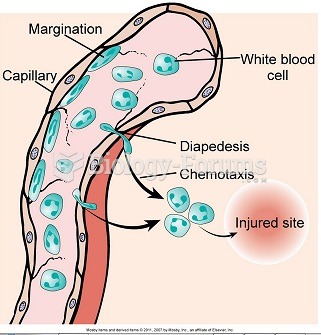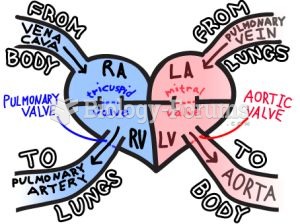Answer to Question 1
Correct Answer: 4
Rationale 1: Increasing blood flow to peripheral blood vessels will not help angina.
Rationale 2: Increasing myocardial contractility will actually make angina worse.
Rationale 3: Angina is caused by a mismatch in myocardial blood flow and myocardial oxygen demand. Increasing the heart's oxygen consumption can cause angina.
Rationale 4: A primary goal of pharmacotherapy for angina is to reduce the frequency and intensity of angina episodes. Additionally, successful pharmacotherapy should improve exercise tolerance and allow the client to actively participate in activities of daily living.
Global Rationale: A primary goal of pharmacotherapy for angina is to reduce the frequency and intensity of angina episodes. Additionally, successful pharmacotherapy should improve exercise tolerance and allow the client to actively participate in activities of daily living. Increasing blood flow to peripheral blood vessels will not help angina. Increasing myocardial contractility will actually make angina worse. Angina is caused by a mismatch in myocardial blood flow and myocardial oxygen demand. Increasing the heart's oxygen consumption can cause angina.
Answer to Question 2
Correct Answer: 1,3
Rationale 1: Increased physical activity requires more cardiac output, increasing the work of the heart and increasing myocardial oxygen demand.
Rationale 2: Watching a television show generally does not require more cardiac output.
Rationale 3: Emotional stress causes epinephrine release, increasing heart rate and contractility and increasing myocardial oxygen demand.
Rationale 4: Eating a meal generally does not require more cardiac output.
Rationale 5: Listening to music generally does not require more cardiac output.
Global Rationale: Increased physical activity requires more cardiac output, increasing the work of the heart and increasing myocardial oxygen demand. Emotional stress causes epinephrine release, increasing heart rate and contractility and increasing myocardial oxygen demand. Watching a television show, eating a meal, and listening to music generally do not require more cardiac output.







